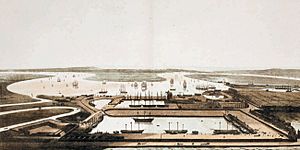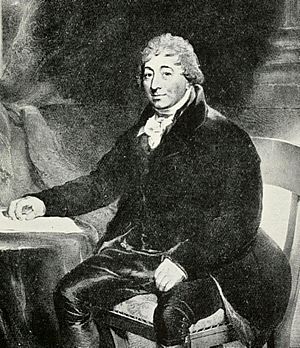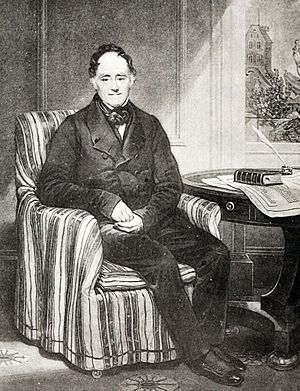Blackwall Yard facts for kids
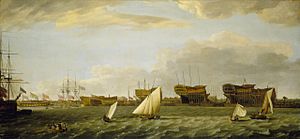
Blackwall Yard was a famous shipyard located on the River Thames in Blackwall. For over 350 years, it was a busy place where many ships were built and repaired. The yard finally closed its doors in 1987.
Contents
A Look Back: The Story of Blackwall Yard
Early Days with the East India Company
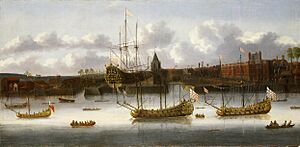
Shipbuilding had been happening in the Blackwall area since the Middle Ages. In 1607, the East India Company decided to build its own ships. They first rented a yard in Deptford. This seemed like a good idea at first. Building their own ships was much cheaper than paying others.
But soon, the Deptford yard became too expensive to run. So, in 1614, the East India Company looked for a new spot. They chose Blackwall because it was further down the river. This meant the water was deeper, allowing big, loaded ships to dock closer to the yard. The new Blackwall Yard was ready by 1617. It grew bigger and bigger over the years. A 12-foot (3.7 m) high wall surrounded the yard.
Later in the 17th century, the East India Company changed its mind again. They went back to hiring ships instead of building them. Often, the ship owners who rented their vessels to the Company had them built right there at Blackwall or Deptford.
The Johnson Family Takes Over
In 1656, the East India Company faced some tough times. They sold the Blackwall Yard to a shipbuilder named Henry Johnson. He was already renting parts of the yard. The sale included three docks, two places for launching ships, and two cranes. Henry Johnson expanded the yard even more. It continued to build and fix ships for the East India Company and many others.
During the Anglo-Dutch wars in the late 1600s, the royal shipyards were very busy. So, the Navy Board started ordering warships from Blackwall. It was the biggest private shipyard on the Thames back then. A new dock built in the 1660s was the largest in England. Blackwall also kept building merchant ships.
After Henry Johnson passed away in 1683, his son, Henry Johnson (junior), took over. He wasn't a shipbuilder himself. He left the yard's management to others, including his brother William Johnson. After William died in 1718, the yard didn't have much work. It was sold in 1724. Naval shipbuilding also slowed down after the Dutch wars ended. But this changed when war with Spain started in 1739.
The Perry Family's Era
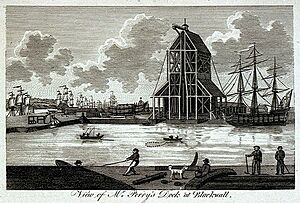
The yard became very successful under the Perry family. They managed and later owned it. By 1742, Blackwall Yard was the biggest on the Thames. In 1784, when Francis Holman painted it, people said it was the largest private shipyard in the world. Around this time, the Perrys started building the huge Brunswick Dock. It opened in 1790.
In 1803, the yard became smaller. The East India Dock Company bought the eastern part, including the Brunswick Dock. This dock later became the East India Export Dock. In the 20th century, it was filled in to build the Brunswick Wharf Power Station. In the 1830s, the London and Blackwall Railway cut off the northern part of the yard. This part was then sold off.
Wigram and Green: New Owners
As the Perrys slowly left the business, the company changed names. It became Perry Sons & Green, then Perry Wells & Green, and finally Wigram & Green. In 1821, the company built its first steamship. During this time, the yard was famous for building fast sailing ships called Blackwall Frigates.
One interesting ship was the paddle-steamer Nile. It was built in 1834 for the Egyptian Navy. William Light sailed it from London all the way to Alexandria.
The Wigram Family's Yard
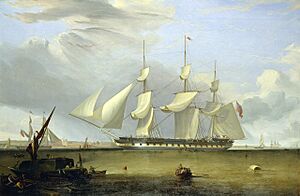
In 1843, the remaining shipyard was split into two. Money Wigram & Sons took the western part. Wigrams soon started building ships made of iron. They stopped building ships in 1876. In 1877, the Midland Railway bought Wigram's yard. They turned it into a coal dock, which was used until the 1950s. This was called Poplar Dock.
During World War II, the dock was badly damaged by bombs. It was later filled in. Today, part of the site has a ventilation shaft for the second Blackwall Tunnel. The rest is now housing.
The Green Family's Yard
The eastern part of the yard was taken over by R & H Green. The Greens tore down old buildings to make their dry dock bigger. This dock was made longer and narrower over time. By 1882, it was 335 ft long (102 m) and 62 ft wide (19 m). In 1878, they opened a 'new' dry dock. This one was 410 ft long (120 m) (later 471 ft (144 m)), 65 ft wide (20 m), and 23 ft deep (7.0 m).
Greens continued building wooden ships longer than Wigrams did. They built 25 naval ships during the Crimean War. Their first iron ship was built in 1866.
R. & H. Green Ltd kept building ships at Blackwall until 1907. In 1910, the company joined with Silley Weir & Company. They became R.& H. Green and Silley Weir Ltd. This new company focused on repairing ships. They grew very quickly before World War I. During the war, they built and repaired many important ships. These included ships for carrying supplies, minesweepers, hospital ships, and destroyers.
After the war, the yard was greatly improved. A huge marine engineering shop was built. It was nearly 350 ft long (110 m), over 100 ft wide (30 m), and almost 60 ft high (18 m). This building was a major feature of the yard until the late 1980s.
In 1977, the company merged again. They joined with the London Graving Dock Company Ltd. They formed River Thames Shiprepairers Ltd. The Blackwall site then became known as Blackwall Engineering. It continued to operate until 1987.
What Happened Next?
The upper dry dock was used until the yard closed. In 1989, it was partly filled in. A new Reuters building was constructed right over it. The eastern dry dock, which is one of the oldest remaining on the Thames, was restored in 1991–92.
In 2021, new plans were announced for the Blackwall Yard area. These plans include building five new buildings. They will range from nine to 39 stories tall. The old dry dock is planned to become an open-air swimming pool!
Famous Ships Built at Blackwall Yard
Many important ships were built at Blackwall Yard over the centuries. Here are just a few:
- HMS Warspite: A 62-gun warship built by Johnsons in 1665-6.
- HMS Belliqueux: A 64-gun ship built by Perrys in 1780.
- HMS Powerful: A 74-gun ship built by Perrys in 1783.
- HMS Vennable: Another 74-gun ship built by Perrys in 1784.
- Warley: Perrys built two East Indiamen (ships for the East India Company) named Warley.
- HMS Albion: A large warship built by Perrys in 1802.
- SS Beaver: A 109-ton paddlewheel steamer launched in 1835. It was used by the Hudson's Bay Company.
- Alfred: An Indiaman ship built by Greens in 1845.
- PS Ripon: A paddlesteamer built in 1846 for P&O.
- HMS Terpsichore: Launched by Wigrams in 1847.
- Indus: A 1,782-ton paddle steamer built by Wigrams in 1847.
- Lightships: Several lightships (floating lighthouses) were built in 1847.
- Sea Witch: A famous tea clipper built in 1848.
- Challenger: Another famous tea clipper built in 1852. It was 174 ft (53 m) long.
- Radetzky: Launched by Wigrams in 1854 for the Austrian navy.
- BAP Apurímac: A steam frigate launched by Greens in 1854 for the Peruvian navy.
- HMY Emperor: Commissioned by Queen Victoria as a gift for the Japanese Emperor in 1857. It was later renamed Banryu.
- Superb: A clipper ship launched by Greens in 1866.
- HMS Crocodile: A large troopship launched by Wigrams in 1867.
- Tugs: Several tugboats like Gamecock (1880), Stormcock (1881), Woodcock (1884), and Sirdar (1899) were built by R & H Green.



